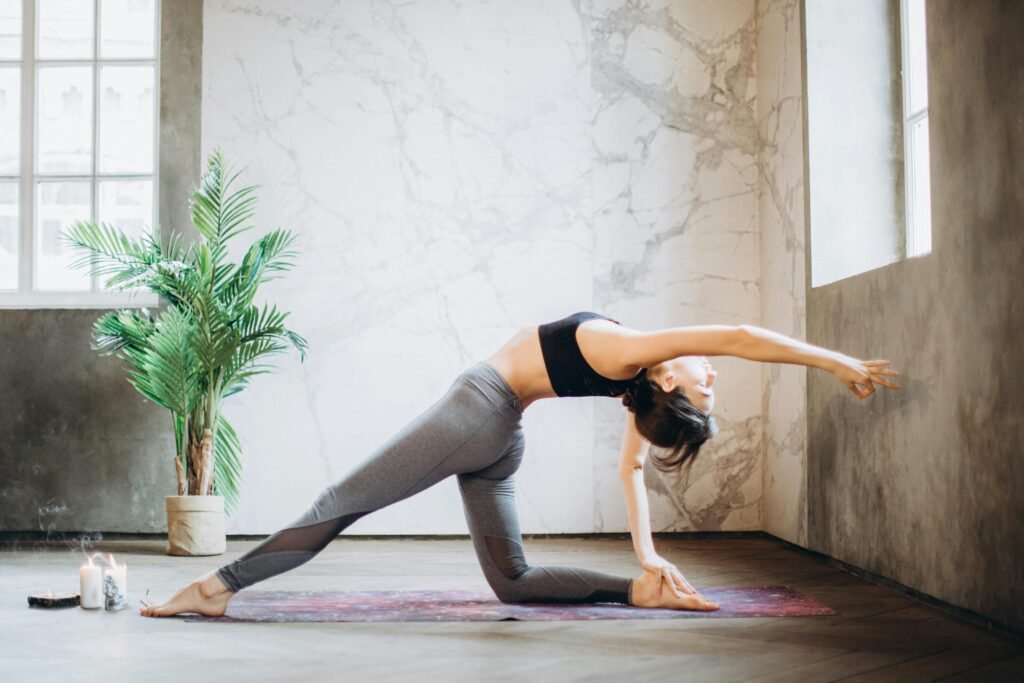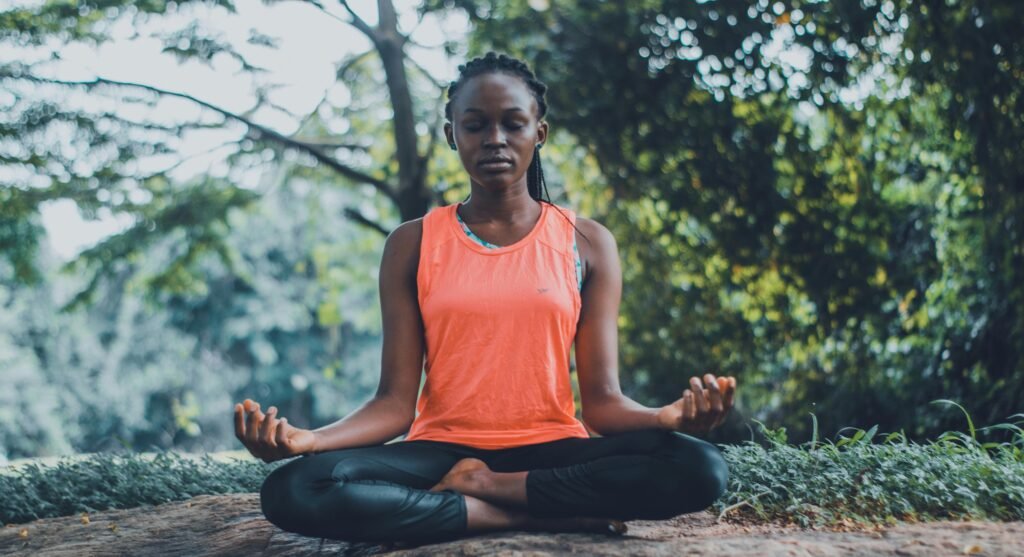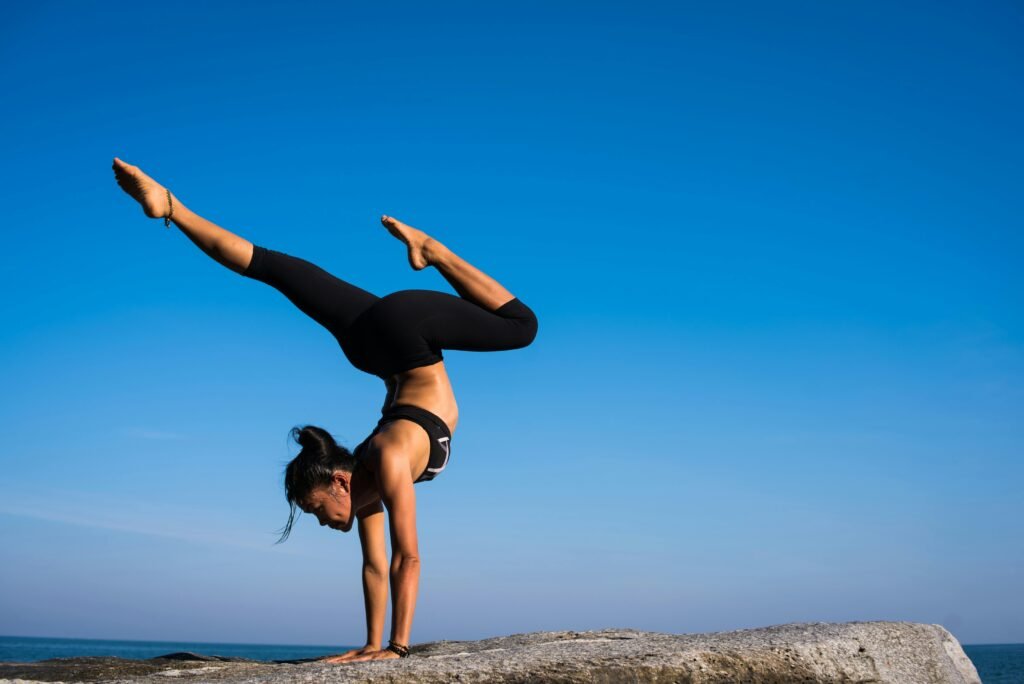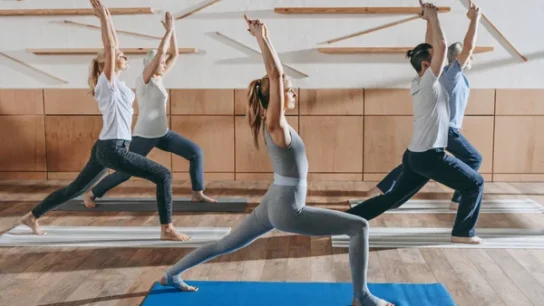Yoga is an ancient practice that blends physical postures, breathing techniques, and meditation to promote holistic well-being. Whether you’re seeking improved flexibility, stress relief, or a new fitness routine, yoga has something for everyone. This comprehensive guide covers the top benefits of yoga.
Top Benefits of Yoga:
1. Improved Flexibility

One of the most significant benefits of yoga is increased flexibility. Regular practice helps to stretch and lengthen muscles, enhancing your range of motion and reducing the risk of injuries. Over time, you’ll notice improved posture and ease in daily movements. Be sure to grab a yoga mat!
2. Enhanced Strength

Yoga builds strength by engaging various muscle groups through poses such as plank, warrior, and boat. These postures help tone and strengthen your entire body, supporting overall physical health without the need for heavy weights. Here’s more on how yoga contributes to building strength:
- Full-Body Workout: Yoga sequences typically work multiple muscle groups simultaneously, promoting balanced strength development. For example, poses like Triangle (Trikonasana) and Side Plank (Vasisthasana) engage the arms, legs, and core. Make sure you have a yoga block!
- Increased Muscle Endurance: Holding yoga poses for several breaths increases muscle endurance. This sustained effort helps muscles become more resilient and capable of prolonged activity.
- Bodyweight Resistance: Many yoga poses (asanas) require you to support your own body weight, which effectively builds strength. Poses like Plank (Phalakasana), Downward-Facing Dog (Adho Mukha Svanasana), and Warrior poses (Virabhadrasana) engage muscles in the arms, legs, core, and back.
3. Stress Reduction

Yoga is renowned for its stress-relieving properties. The combination of physical activity, controlled breathing, and meditation helps lower cortisol levels, the body’s primary stress hormone. Here’s how these elements work together to alleviate stress:
- Breath Control (Pranayama): Yoga emphasizes deep, mindful breathing techniques that help activate the parasympathetic nervous system, responsible for the body’s “rest and digest” response. Controlled breathing reduces heart rate, lowers blood pressure, and promotes a sense of calm.
- Mindfulness and Meditation: Yoga incorporates elements of mindfulness and meditation, encouraging practitioners to focus on the present moment and let go of worries about the past or future. This mental shift can significantly reduce anxiety and stress.
- Relaxation Techniques: Many yoga classes end with a relaxation pose, such as Savasana (Corpse Pose), which helps the body and mind to release stress and tension. Guided relaxation and visualization techniques used in yoga can further deepen this sense of calm.
4. Better Balance and Coordination

Yoga increases balance and coordination through a variety of techniques and practices that target both the physical and neurological systems. Here’s how:
- Strengthening Muscles: Many yoga poses require holding the body in positions that challenge various muscle groups. Strengthening core muscles, legs, and stabilizers is crucial for maintaining balance. Poses like Tree Pose (Vrksasana) and Warrior III (Virabhadrasana III) are particularly effective for building the strength needed for balance.
- Improving Proprioception: Proprioception is the body’s ability to sense its position in space. Yoga enhances proprioception through the practice of maintaining and transitioning between poses. As you become more aware of your body’s alignment and positioning, your coordination improves.
- Aligning the Body: Yoga emphasizes proper alignment in each pose. Practicing with correct alignment trains your body to distribute weight evenly and maintain equilibrium, which directly improves balance.
5. Increased Mindfulness

Practicing yoga encourages mindfulness by focusing on the present moment. This heightened awareness can lead to improved mental clarity, better focus, and a greater sense of peace and well-being. Through a combination of physical postures, breath control, and meditation practices, yoga can encourage a deep connection between the mind and body.
